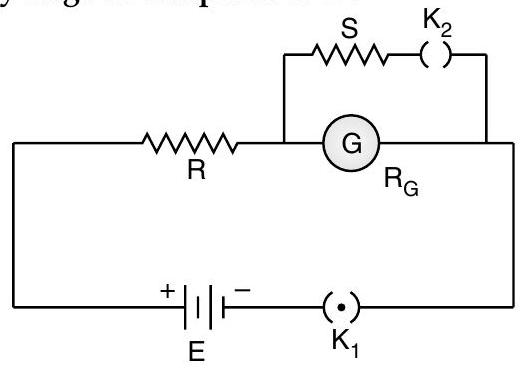Question: Q. 7. The current flowing in the galvanometer when the key is kept open is . On closing the key , the current in the galvanometer becomes , where is integer.
Obtain an expression for resistance of the galvanometer in terms of and . To what form does this expression reduce when the value of is very large as compared to ?

U] [CBSE SQP 2014]
Show Answer
Solution:
Ans. With key open, the current I in the galvanometer is given by
When is closed, the equivalent resistance, say , of the parallel combination of and is given by
The total current, say drawn from the battery would now be
This current gets subdivided in the inverse ratio of and . Hence the current through , would now be given by
This is the required expression
When , we have
[CBSE Marking Scheme 2014]
Long Answer Type Questions







